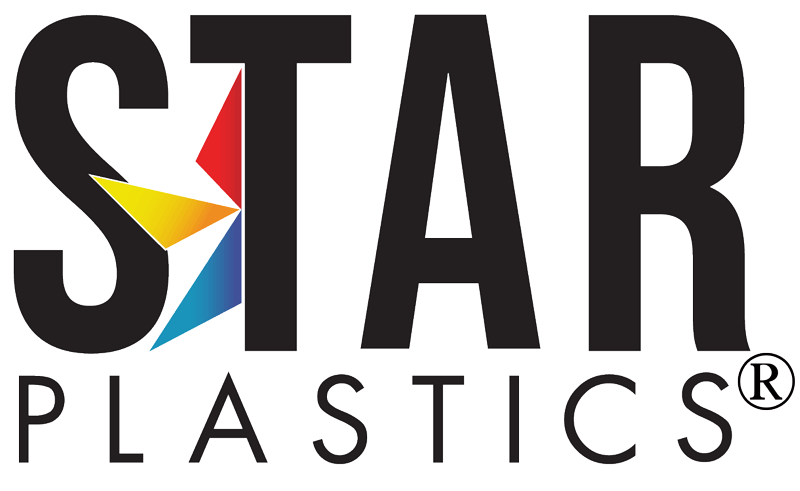May 2025 | Market Update
Market Movement – Engineering Resin Prices Flat – Direct & Indirect Tariffs
From Chuck Hoop, Business Director, Star Plastics
In the plastics market this month:
Ascend Files Chapter 11 Bankruptcy
Plastics News reported on April 21 that Ascend Performance Materials has filed for Chapter 11 bankruptcy protection as part of a strategic effort to restructure its debt. This move will allow the company to strengthen its balance sheet and continue to deliver materials to its nearly 1,650 customers worldwide. Backed by strong lender support, Ascend plans to use the Chapter 11 process to implement a value-maximizing restructuring strategy, positioning the company to emerge as a healthier, well-capitalized business. Ascend is the world’s largest fully integrated producer of nylon 66, with annual revenues exceeding $3 billion. The company operates as a portfolio business within a New York-based investment firm SK Capital Partners. We see this as a reaction from China’s explosion of nylon product in the last few years and being self-sustaining. And Ascend would have lost their export revenue stream. The entire article can be seen here.
Teijin Sells North American Operations to Private Equity Firm Aurelius
In early April, Plastics News reported that Teijin Ltd. has sold its North American business unit—Teijin Automotive Technologies North America (TAT-NA)—to private equity firm Aurelius Group. TAT-NA is a major supplier of advanced composite materials for automotive applications, including the carbon-fiber reinforced pickup truck beds used in the GMC Denali CarbonPro and structural components in performance vehicles like the Chevrolet Corvette.
TAT-NA has a strong legacy of serving key OEMs across the North American automotive, heavy truck, marine, and recreational vehicle markets. The company operates 14 facilities in the U.S. and Mexico, employs approximately 4,500 people, and generates over $1 billion in annual revenue.
This acquisition underscores the continued interest from private equity in the advanced materials space, particularly as lightweighting and sustainability remain high priorities across transportation sectors.
Read the full article: Teijin sells North American operations
Ineos Styrolution Announces Price Increases Ahead of Tariff Implementation – Effective as of April 11, 2025
Ineos Styrolution has announced price increases ranging from 10 to 23 cents per pound (CPP), depending on the country of origin for imported materials. These adjustments are being implemented in response to the 10% tariffs that took effect on April 15, 2025. The pricing strategy reflects the increased costs associated with importing material into the United States under the new trade policy.
On the materials side –
CMA reported polycarbonate continues to be flat at $1.58 for GP and optical was stable at $1.48 as well. After all the effects of tariffs on PC, and because we’re a net exporter of PC and only 30% of the North American market is supplied by imports, the market is considered stable. Demand has been flat from last month and supply is stable. Sabic’s Mt. Vernon plant which went down for planned maintenance last fall, just came up in April
ABS did the same thing at $1.44 for GP and $1.34 for extrusion. Benzene was stable, acrylonitrile was slightly lower than last month, and styrene was slightly up giving us a flat ABS price. Imported ABS in North America represents between 35 and 40% of consumption so tariffs will have a bigger impact on pricing looking forward. All while nylon 6 and 66 were reported down just 2 CPP landing at $1.57 and $1.78 respectively. The reduction comes from the benzene softness and, looking forward, tariffs are the biggest concern followed by whether or not they incur tariffs on imports or not. No matter what, the automotive market will have an impact on both 6 and 66 looking forward. Finally, in PBT dropped by 1 CPP at $1.45. The reduction comes from the benzene softness over the last 30 days. While North America imports most of its PBT, it could be a significant issue looking forward. knowing that the key markets for PBT include automotive and electronics constituting about 70% of the consumption in North America.
Materials Update
Polycarbonate (PC):
CMA reported that polycarbonate prices remain flat, with general purpose (GP) at $1.58 and optical grades holding steady at $1.48. Despite previous tariff impacts, the market has stabilized. This is largely because North America is a net exporter of PC, and only about 30% of the market is supplied by imports. Demand and supply conditions have both remained flat since last month. Notably, Sabic’s Mt. Vernon plant, which had been offline for planned maintenance since last fall, resumed operations in April.
ABS (Acrylonitrile Butadiene Styrene):
ABS pricing was also unchanged, with GP at $1.44 and extrusion grades at $1.34. Feedstock prices were mixed—benzene remained stable, acrylonitrile saw a slight decline, and styrene inched up—resulting in an overall flat ABS price. Imported ABS makes up 35–40% of North American consumption, suggesting that tariffs will have a more significant effect on future pricing compared to PC.
Nylon 6 & Nylon 66:
Both nylon 6 and nylon 66 saw slight declines of 2 CPP, landing at $1.57 and $1.78, respectively. This reduction was mainly driven by softness in benzene prices. Looking ahead, tariffs remain the biggest variable—particularly whether imports will be subjected to new duties. The automotive sector will continue to play a key role in demand trends for both types of nylon.
PBT (Polybutylene Terephthalate):
PBT dropped by 1 CPP to $1.45, also due to recent benzene price softness. North America relies heavily on imports for PBT, which could pose a challenge moving forward. Approximately 70% of PBT consumption in the region is tied to the automotive and electronics sectors, making these end-markets critical indicators of future trends.
The March shipping landscape is showing a few trends starting to stand out:
Overall Resilience in U.S. Imports:
The 6.3% month-over-month and 11% year-over-year increase in U.S. container imports suggests that consumer demand and business restocking remain fairly strong, despite the threat of tariffs and global uncertainty. That’s a decent signal of economic momentum, at least on the trade front.
China-Specific Shift:
The month-over-month decline in U.S. imports from China (-12.6%) versus a year-over-year increase (+9.4%) is telling. It reflects how sensitive trade flows are to policy shifts—like those early February and March tariffs. It’s likely that some companies rushed to front-load shipments in January, anticipating the added costs. Then things tapered off.
East Coast Ports Gaining Ground:
The East Coast taking 43% of the U.S. import share is a significant shift. That rise, coupled with the West Coast’s 3.4% dip, could indicate that logistics strategies are adapting—possibly due to labor concerns at West Coast ports, capacity changes, or shifts in shipping routes through the Panama Canal (or even the Suez disruptions). Longer-term, if this trend continues, it might reshape where goods are warehoused and distributed domestically.
It’s all interconnected too. More East Coast activity could mean changes in rail and trucking patterns inland, which could influence fuel demand, labor, and even regional inflation in some cases along with changing shipping times (up or down). The full Interlog story can be found here.
FreightWaves is reporting a noticeable slowdown in container volumes from China.
With new tariffs taking effect on April 25, 2025, ocean carriers are seeing booking volumes drop by as much as one-third—prompting widespread cancellations of scheduled sailings. Looking ahead, one major concern is the growing number of empty containers stacking up at West Coast ports. As these sailings are canceled, fewer containers are making the return trip to China for reloading. This will result in equipment shortages overseas and longer lead times for U.S. importers. If you source goods from China, plan for extended lead times and build that into your forward planning. Additionally, this disruption will spill over into rail networks, where carriers will be reluctant to hold idle containers in terminals or on trains. That creates inefficient use of equipment and labor—work being done without generating value—which contributes to inflationary pressure. In short, I see this becoming a major issue over the next 90 days. It seems to be the next wave of disruption we’ll need to navigate. Full story here.
Antimony Trioxide (ATO) Market Update – Ongoing Supply Challenges and Rising Prices
Antimony Trioxide (ATO) continues to pose major challenges across the global supply chain. It has now been roughly six months since the bulk of the world’s ATO supply became severely constrained. Currently, an estimated 80% of global production comes from China, Russia, and Tajikistan—regions facing ongoing disruptions that have significantly affected availability. We are now seeing what appears to be a second wave of price increases for compounds that rely on ATO as a flame retardant. These cost hikes are already rippling across multiple industries. Commonly affected materials include ABS, nylon, PBT, and flexible PVC—all of which depend heavily on ATO for their flame-retardant performance. At its core, this is a supply-and-demand crisis. As availability tightens, prices have surged and are expected to continue rising. For the few countries still able to access ATO, import tariffs present an additional challenge. A minimum 10% surcharge is currently in place—particularly impacting shipments arriving through U.S. West Coast ports—on top of already elevated costs. ATO’s importance extends well beyond flame retardants. It plays a crucial role in advanced technology and defense applications, including protective gear, semiconductors, and diodes. This broad usage only intensifies the urgency and competitive pressure surrounding its limited supply. Star Plastics has been actively supporting customers in transitioning from FR ABS to FR PC/ABS, helping them take advantage of the many benefits this material change offers. To learn more about the advantages of switching to FR PC/ABS, please review this resource.
Fees for Chinese built vessels coming to The United States
On April 17th, the U.S. administration imposed new fees on Chinese-built vessels, following a United States Trade Representative investigation initiated under both the Biden and Trump administrations. The investigation concluded that China’s actions, policies, and practices were unreasonable and placed undue burdens on U.S. commerce. These new fees are in addition to existing tariffs on materials imported via these vessels, making it likely that the increased costs will be passed on to consumers. The fees are structured to rise annually through 2028, as outlined below. The entire story from CNBC can be found here. (The fees below were copied and pasted from the article.)
Fee schedule:
For the first 180 days, the fees would be set at zero and are broken down into various categories. All charges are based on the net tonnage of a vessel. Container vessels can range from 50,000 tons to 220,000 tons.
Service Fee on Chinese Vessel Operators and Vessel Owners of China:
Effective as of April 17, 2025, a fee in the amount of $0 per net ton for the arriving vessel.
Effective as of October 14, 2025, a fee in the amount of $50 per net ton for the arriving vessel.
Effective as of April 17, 2026, a fee in the amount of $80 per net ton for the arriving vessel.
Effective as of April 17, 2027, a fee in the amount of $110 per net ton for the arriving vessel.
Effective as of April 17, 2028, a fee in the amount of $140 per net ton for the arriving vessel.
The fee will be charged up to five times per year, per vessel. The register did not break out the price per container.
Service fees on vessel operators of Chinese-Built vessels is lower.
Effective as of: April 17, 2025, a fee in the amount of $0 for each container discharged.
Effective as of October 14, 2025, a fee in the amount of $18 per net ton ($120 per container)
Effective as of April 17, 2026, a fee in the amount of $23 per net ton ($153 per container)
Effective as of April 17, 2027, a fee in the amount of $28 per net ton ($195 per container)
Effective as of April 17, 2028, a fee in the amount of $33 per net ton ($250 per container).
The fee will be charged up to five times per year, per vessel. Fees on foreign-built car carrier vessels will also be based on their capacity. The fee would start at $150 per car equivalent unit (CEU) in 180 days.
The second phase will not begin for three years and would target LNG vessels. The USTR would limit restrictions on transporting LNG via foreign vessels. These restrictions will increase incrementally over 22 years.
If ocean carriers can provide proof of ordering a U.S.-built vessel, the fees or restrictions on an equivalent non-U.S.-built vessel are suspended for up to three years.·
Fees on Chinese-built ships effectively do not cover Great Lakes or Caribbean shipping, shipping to and from U.S. territories.
Bulk exports like coal or grain will be exempt, along with empty ships arriving at the ports.
Gray Trade created by China to avoid tariffs
At the end of April, The Epoch Times reported that China is attempting to circumvent U.S. tariffs by routing exports through countries with lower tariff rates before re-exporting them to the United States. Under the current system, Chinese goods face a 145% tariff. To avoid these steep duties, China is increasingly engaging in what has been termed the “gray trade” — a practice in which goods are first shipped to countries such as Mexico, Vietnam, or Malaysia, where they are assembled or modified and relabeled as made in the country before being sent to the U.S. One example cited in the report involves Chinese electronic components being shipped to Vietnam, assembled into finished products, and then labeled “Made in Vietnam.” This allows the goods to enter the U.S. under a significantly lower 10% tariff, as set by the Trump administration’s 2025 reciprocal tariff regime, effectively bypassing the higher tariff on direct Chinese imports. The full story can be seen here.
On April 24, The Wall Street Journal reported that the U.S. is imposing tariffs as high as 3,521% on solar cell imports from Cambodia, Thailand, Vietnam, and Malaysia.
These steep duties would render the solar products effectively unsellable to American consumers. The move reflects growing concerns that China is sidestepping existing punitive tariffs by increasing exports through a network of factories in these countries. The tariffs are based on a Department of Commerce investigation, which found that Chinese companies operating in the region were dumping solar panels and cells into the U.S. market at unfairly low prices. The new measures arrive at a difficult moment for the solar industry, as President Trump has started rolling out energy policies that could reduce demand for renewable energy.



